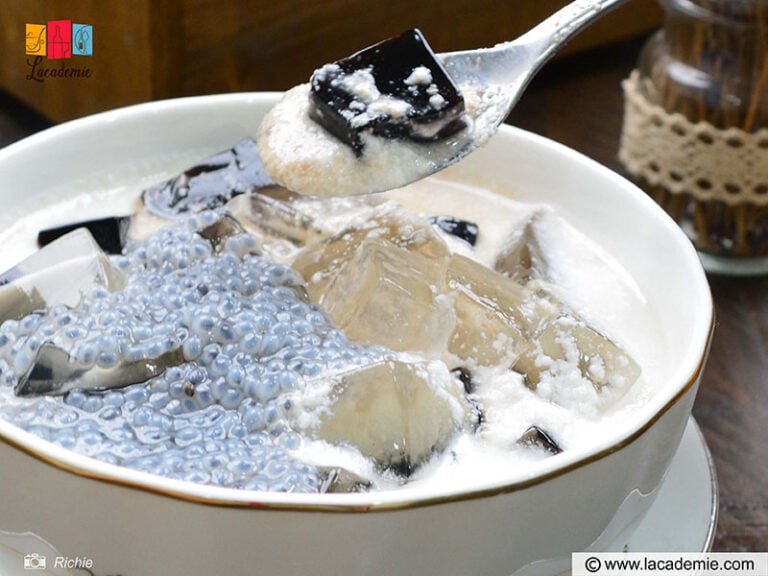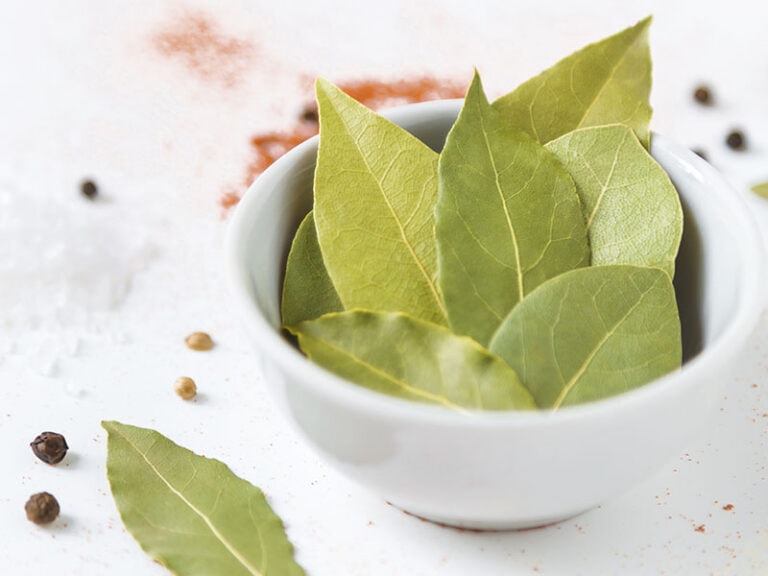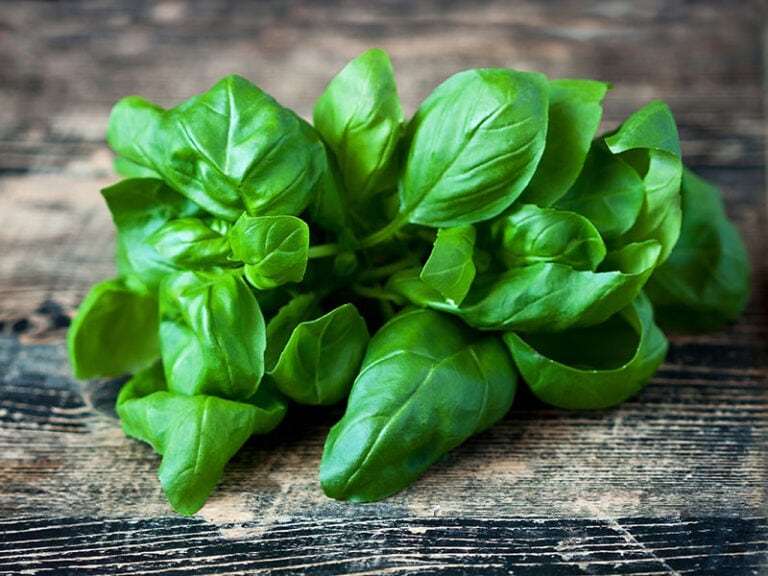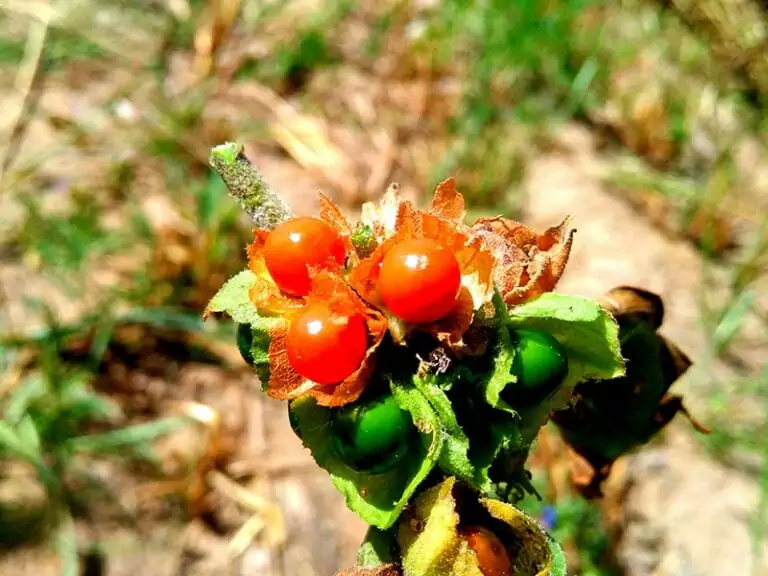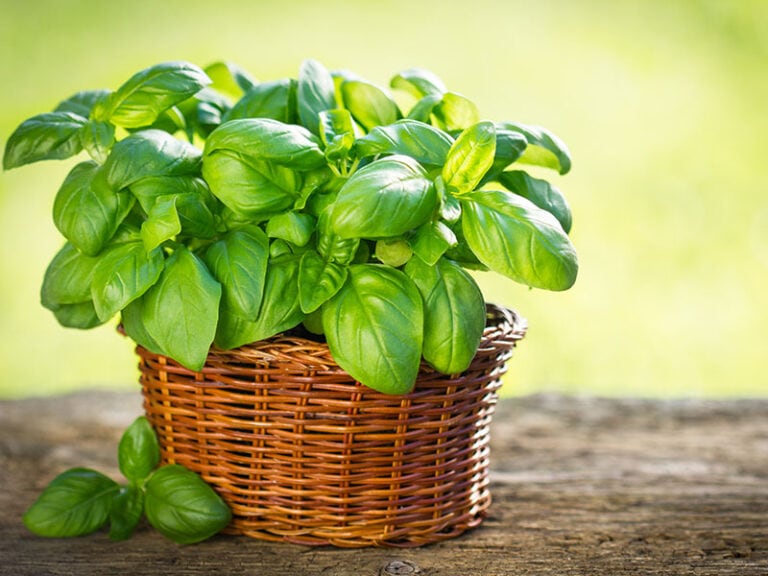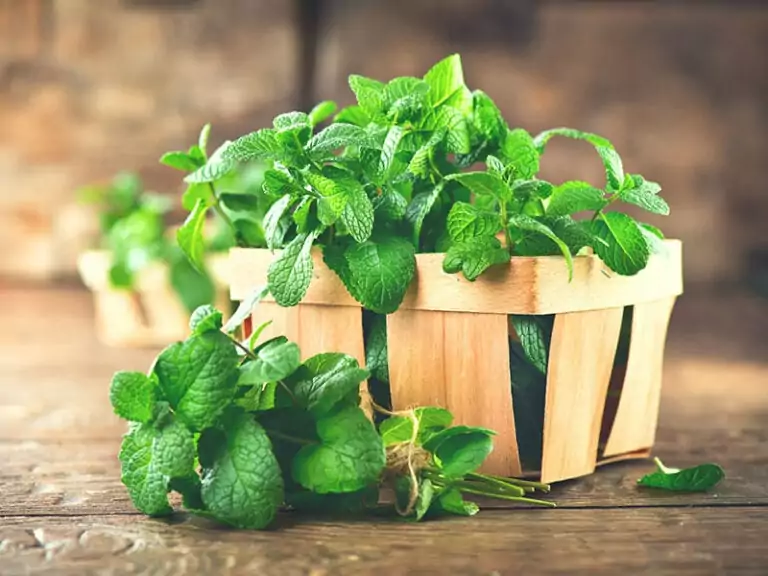I bet you already know some familiar basil types like sweet basil, Genovese basil, or Thai basil, but what about other varieties? They deserve some love too!
Also, if you’re not an avid gardener, chances are that you don’t know that basil belong to the mint family, which is the same family as oregano, thyme, rosemary, marjoram, etc. That’s why you’ll see comparisons between basil and oregano, thyme, and other herbs in the same family.
By the end of this post, not only will you be able to name 30 unique types of basil, but you will also get to know their taste, their texture, and how to incorporate them into your meals. So what are you waiting for? Let’s dive right in!
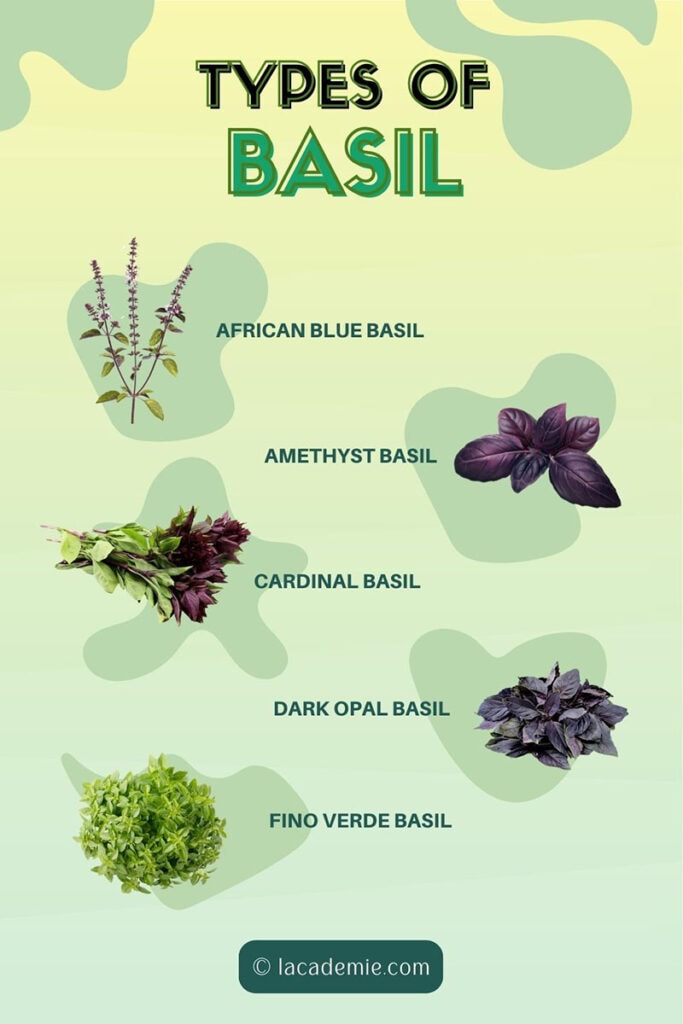
30 Basil Varieties That You Might Not Know (Alphabetical Order)
Fun fact, basil is estimated to have up to 150 different species. These eating items’ names have a starting letter ranging from a to z. So it is almost impossible to find every single one of them, let alone know how they taste.
But don’t worry! In this section, you will be able to know the names of the most common basil types and learn a thing or two about the taste of basil. You’ll also get to learn a thing or two about what recipes you can make with basil to enrich your recipe reservoir.
1. African Blue Basil
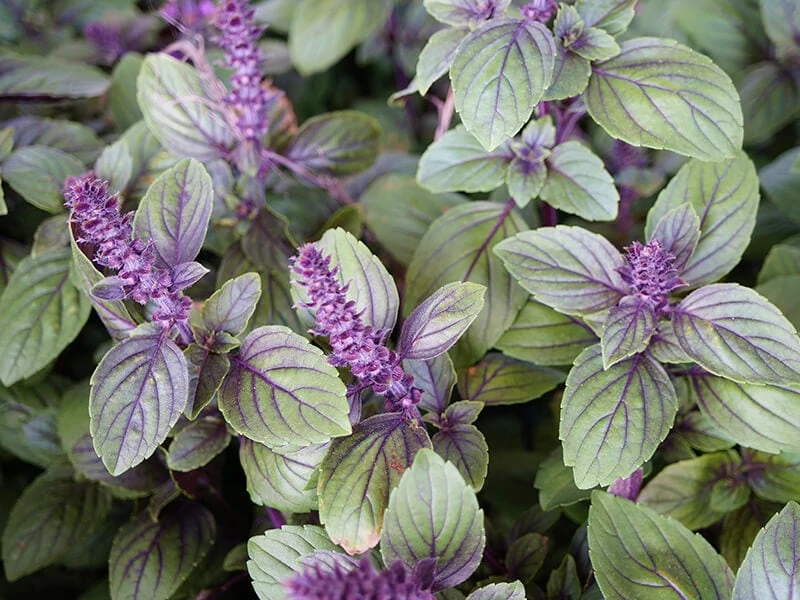
African Blue basil is one of the tallest cultivars, reaching up to 4ft in height. Sometimes people grow African Blue basil for its flowers alone since they are so beautiful. Besides that, this basil can also elevate your home-cooked meals with intriguing peppery, minty aromas.
Just like other basil flowers, the flowers from African Blue basil are edible (1). So there are many other things you can do with these basil flowers besides eating them or using them as decoration.
2. Amethyst Basil
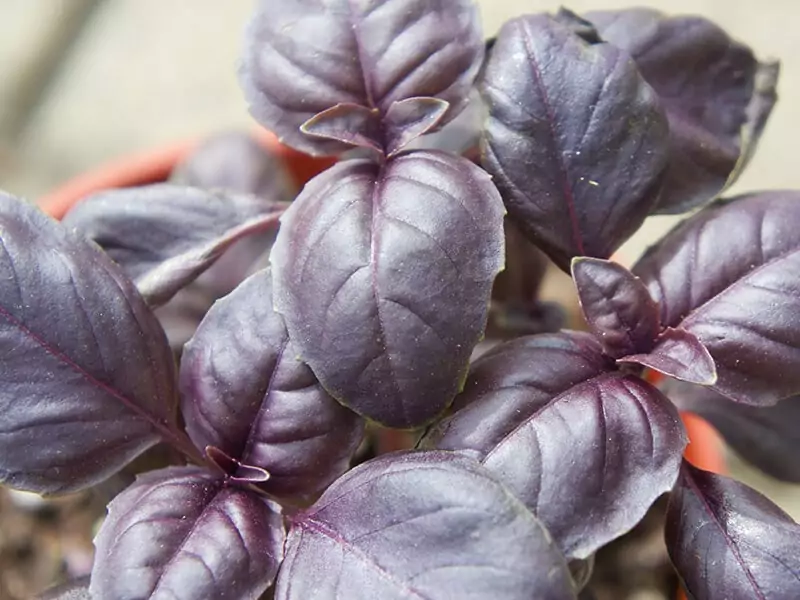
This basil has a stunning dark purple color that can make your meals look much more exciting. To describe its taste, it is slightly sweet with a touch of licorice, almost similar to normal sweet basil. So, give this basil a try if you want to add sweetness and color to your meals.
3. Blue Spice Basil
With its spicy vanilla overtones, this basil makes a great addition to fruit salads and other savory dishes. The defining physical features of this herb are its light purple flowers. These flowers will look fantastic in enclosed potting or open gardens.
4. Cardinal Basil
You can instantly recognize this basil because of its big red spiky blooms. The spicy anise-licorice flavor from this plant will make a great addition to your vinegar and oil mixture. You may eat them fresh as well, but the taste might be too intense for direct consumption.
5. Cinnamon Basil
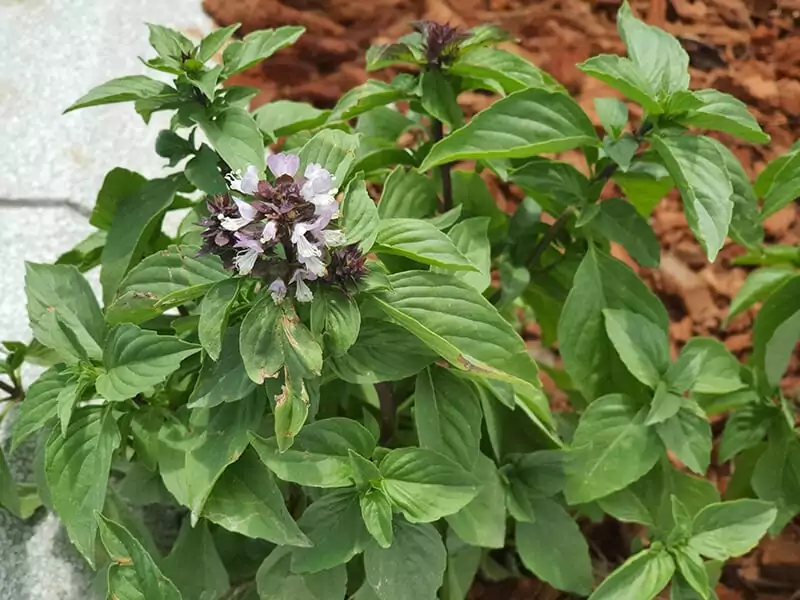
Another spicy basil that you can add to your dish is cinnamon basil. This basil has a mild, spicy flavor and, of course, a hint of cinnamon aroma. You can pair it with fruits or Asian meals such as noodles, fried rice, or grilled veggies.
Additionally, this basil gives beautiful purple and pink flowers that can brighten your garden.
If you want to learn more about Cinnamon basil, take a look!
6. Dark Opal Basil
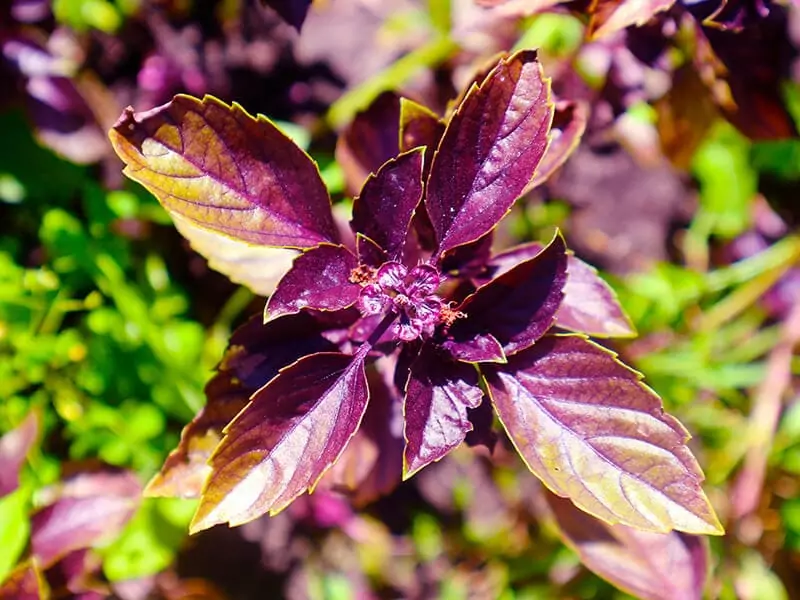
As you can probably tell from its name, this basil is defined by its dark coloring. The flavor profile of this basil is out of this world, offering a sweet and savory flavor with a hint of clove, ginger, anise, cinnamon, and mint.
7. Fino Verde Basil
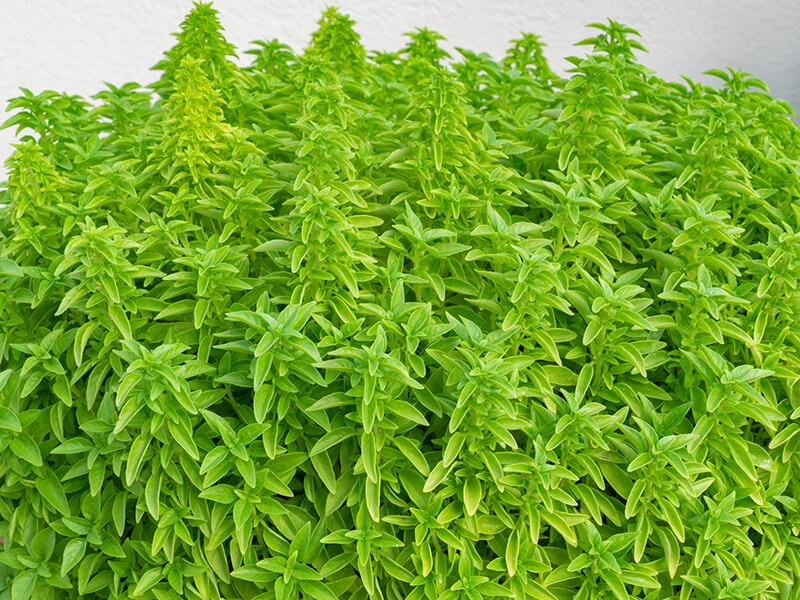
Fino Verde basil offers a pure sweet basil taste with a slightly spicy flavor that works great in salads. The small-leaved bush appearance with showy white flowers and vibrant green foliage of this basil is perfect for your garden or flower beds.
8. Genovese Basil
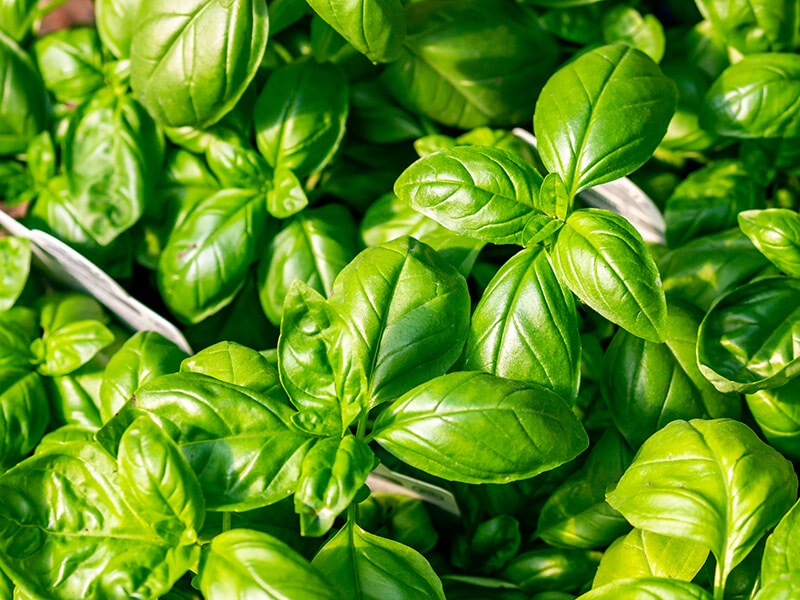
This is one of the go-to basil for pesto or Italian recipes because of their large dark green leaves. Although it is slightly more robust and aromatic, Genovese basil still retains the familiar taste of the regular basil.
So, if you run out of the usual sweet basil, you can use Genovese basil as a top-notch alternative for basil. I’ll let you in on a secret, use Genovese basil for your pesto, you’ll be blown away by how amazing your pesto tastes.
9. Greek Basil
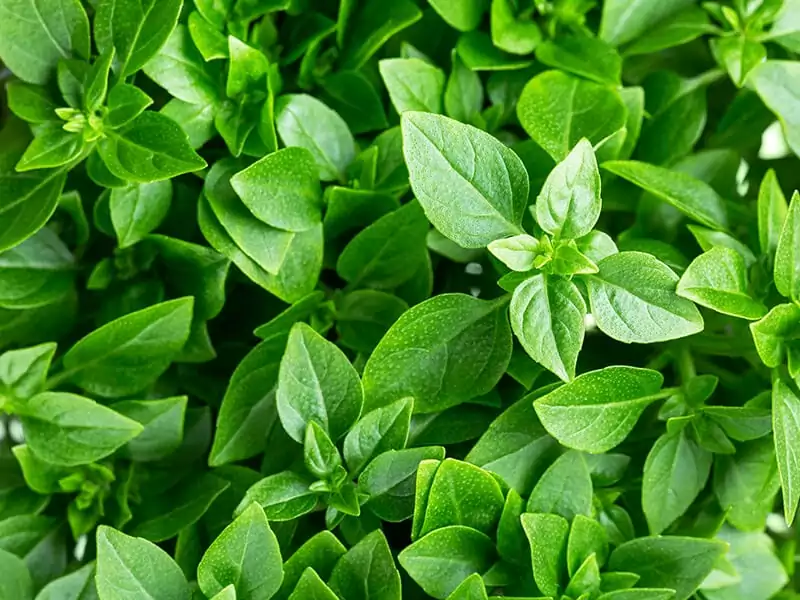
If you don’t want your basil to take up too much space in the garden, then this will be the ideal type for you. Greek basil is only 8” tall, so you can easily plant it in a pot and put it somewhere in your kitchen.
Greek basil can spice up various types of salads, meat dishes, and soups. Its tiny leaves will also make a nice type of garnish for many dishes.
Not sure if you should choose Greek basil or parsley as garnish for your dish? In cases like these, I’d try to compare basil against parsley to know which one has a more suitable flavor for my dishes.
10. Green Ruffles Basil
One more excellent addition to your Italian dishes is Green Ruffles basil. Its mild, subtle flavor can easily elevate your pasta dishes. Its defining ruffed leaf appearance will also provide a more diverse and beautiful presentation to any salad.
11. Holy Basil
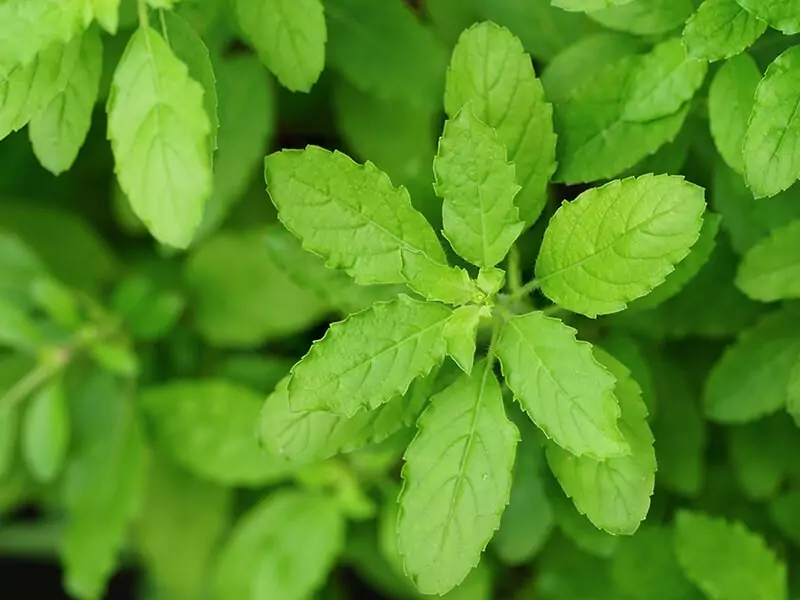
If you plan to make curry or other Indian dishes, Holy basil is something you can’t miss. When cooked, it will provide a sweet and spicy flavor, giving you an authentic Indian experience.
Another herb commonly found in Indian cuisine is ashwagandha. It’s true that there are many aspects that set holy basil apart from ashwagandha, but there’s no denying how these two herbs have brought about distinct flavors in Indian culinary experience.
Additionally, Holy basil is known to have many positive effects on the body. It can reduce infection, promote better blood circulation and lower cholesterol, benefit your stomach and ease joint pain (2).
12. Lemon Basil
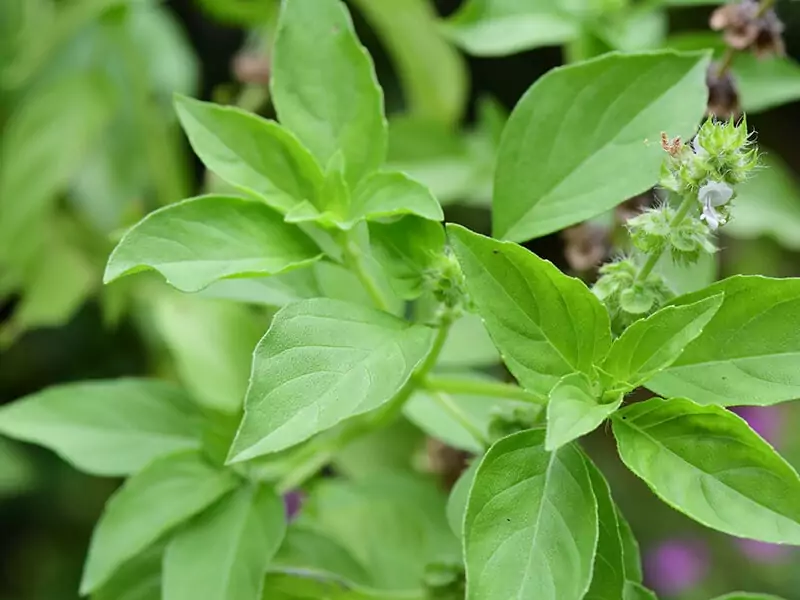
Lemon basil holds up to its name since it smells and tastes remarkably like lemon. If you enjoy this citrus scent, you should definitely go for this basil type.
It will add a natural lemon flavor to your fish dishes, salads, or grilled vegetables. Adding 1 or 2 lemon basil leaves to your iced tea will make it extra refreshing and lemony.
Although I can’t see their similarities, I’ve often seen people confuse bay leaf with this basil variety. Honestly, I think once you know the distinguishing points between basil and bay leaf, you’ll see that these two are entirely different herbs that should be used for different recipes.
13. Lettuce Leaf Basil
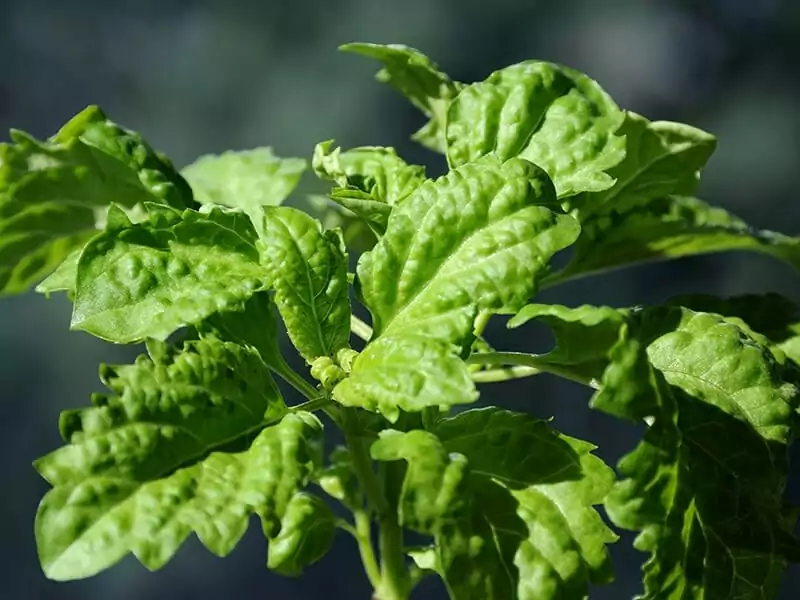
Just like lettuce, Lettuce Leaf basil will work great in salads or other leafy dishes. The leaf of this basil is about 4” wide and 6”-10” long, making it the ideal leaf for lettuce wraps. You can also make pesto out of it or infuse it with oil and make bread dip.
14. Licorice Basil
With its vibrant green and purple foliage, Licorice basil offers an immense fragrance that is great for any home garden. Implied by its given name, licorice and anise flavor tones are prevalent in this type of basil.
15. Lime Basil
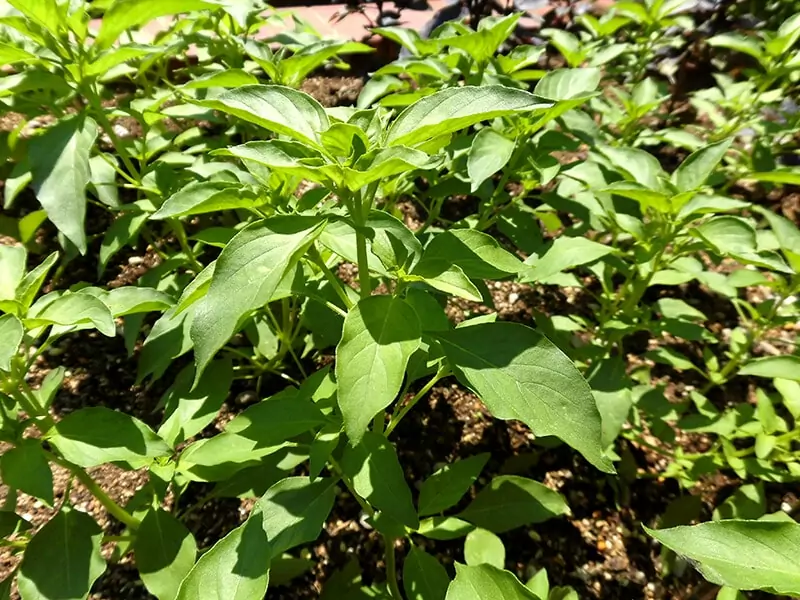
Nearly identical to lemon basil, lime basil is more commonly used in a wide variety of dishes. It can be used on fish, chicken recipes, or a multitude of different sauces.
If you enjoy the combination of sweet and sour, you can also infuse it in syrup or add it to your desserts or teas.
16. Magical Michael Basil
This annual herb is perfect for its edible qualities, although it does offer ornamental purposes as well. Magical Michael basil is defined by its oval green leaves, producing white and purple flower spikes. This herb will do great in mixed containers, annual beds, and herb gardens.
17. Marseille Basil
Marseille basil comes from France and is often referred to as the “queen of fragrance” because of its defining strong sweet and potent aroma, with licorice undertones.
This basil pairs well with tomatoes, pasta, mild cheeses, and various kinds of vegetables. This dwarf plant is best grown in rich and well-drained soil bedding exposed to full sunlight.
18. Minette Basil
Perfect for knot gardens, edging, and growing containers, Minette basil is defined by its dwarf characteristics and succulent and aromatic small leaves.
This basil can easily add sweet tastes and clove scents to your daily meals. Plus, its intense aroma can ward off various pests lurking in your garden.
19. Napolitano Basil
This herb gives large light green and ruffled leaves with a very similar taste to sweet basil. Still, it offers more of a kick with a taste of traditional anise. So if you want to spice up your pesto, add Napolitano basil leaves to the mixture.
20. Nufar Basil
Nufar basil is an excellent alternative to any dish that calls for basil. It is perfect for pairing with pesto, tomato dishes, and salads. Additionally, this basil also offers the benefits of resistance to many diseases.
21. Osmin Purple Basil
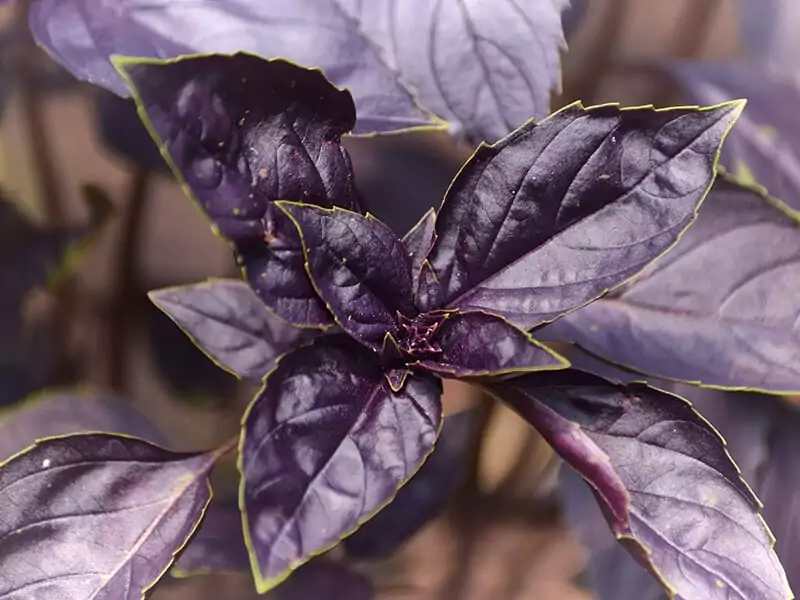
Cultivated from Switzerland, this basil stands out from other purple basil because of its faster growth pattern and pure dark maroon color. This lovely and fragrant ornamental is also a culinary herb for bright and savory pesto, vinaigrettes, and other dishes.
22. Pistou Basil
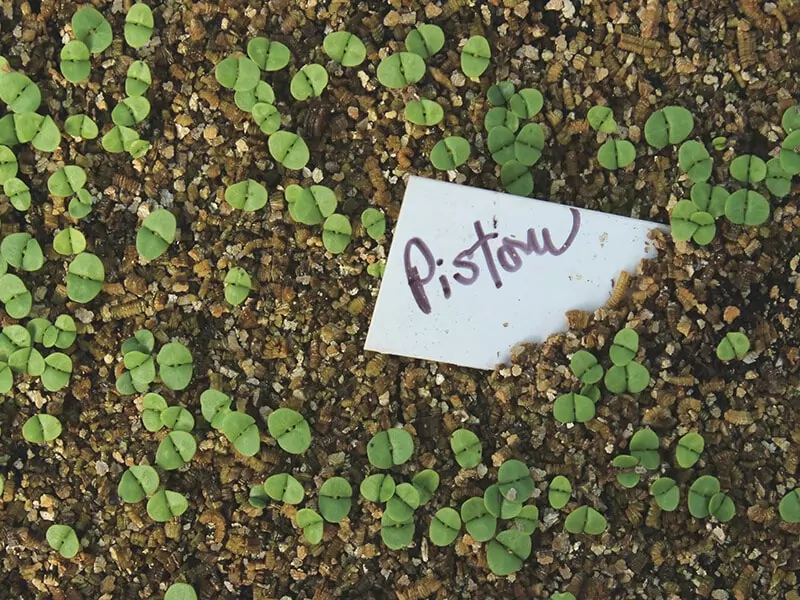
Because it is so tiny, this basil can easily be placed along walkways, bed edges, or smaller garden spaces. Pistou basil leaves appear much smaller than other basil varieties. They emit a mildly sweet aroma when lightly crushed and have a subtly spicy flavor.
23. Purple Ruffles Basil
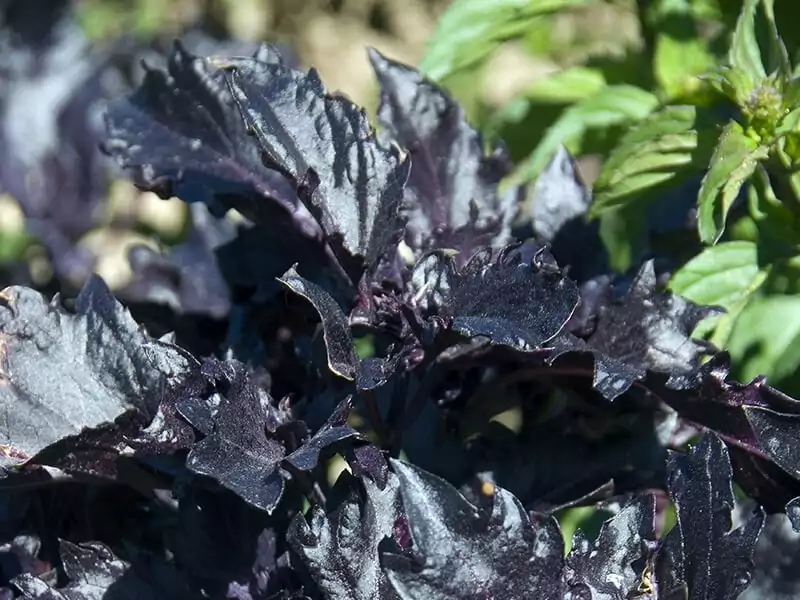
This highly aromatic and flavorful basil will work wonderfully with vinegar and oil. Its dark burgundy leaves can also make your dishes more vibrant and attractive.
Additionally, if you enjoy the look of Purple Ruffles basil, you can add it to your flower arrangement or garnish your dish with it.
24. Queen Of Sheba Basil
This aromatic and attractive basil is a perfect ornamental herb that can be utilized in various landscape flower beds.
Its mild flavoring can be added in multiple types of pesto sauces and other light Italian dishes. It will also complement other herbs well to create a unique flavor.
25. Queenette Basil
Queenette basil is defined by its tropical-looking leaves with distinctive purple stems. Queenette offers an exotic taste with aromatic scents of mild and sweet spice flavoring with hints of clove and mint. This beautiful herb pairs well with authentic Thai dishes and ingredients.
26. Red Rubin Basil
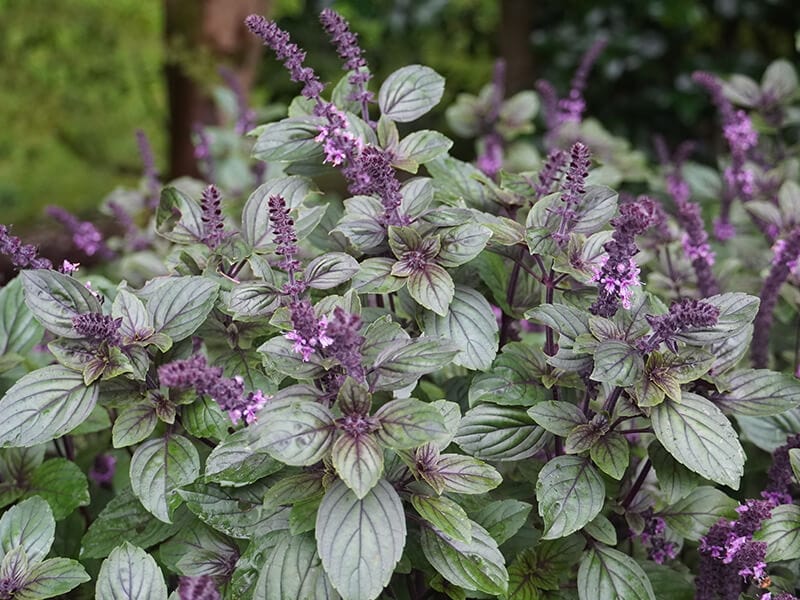
This basil will look great on your flower beds and garden with its gorgeous light red to deep violet coloring. Red Rubin basil is not just decorative; it also adds tons of flavor and color to your salads.
27. Serata Basil
This ruffled leaf basil has a pungent, spicy flavor that many might like. You can use it to garnish your home-cooked meals if you enjoy its taste. This basil type benefits from growing during warm seasons and requires a sunny spot for farming.
28. Spicy Globe Basil
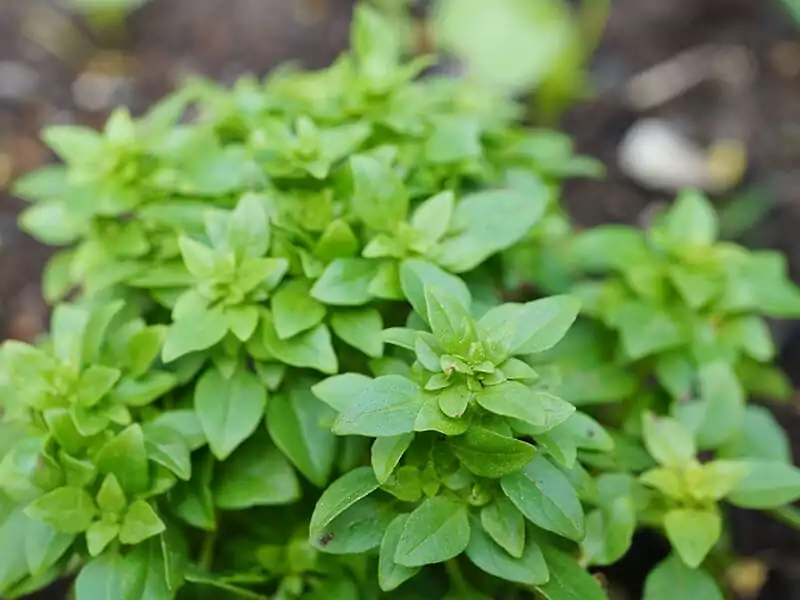
Despite being short and compact, Spicy Globe basil offers a peppery and citrus taste to any pasta dish or pesto. You can also grow this basil in a pot and put it on your windowsill or kitchen since it is so small.
29. Sweet Basil
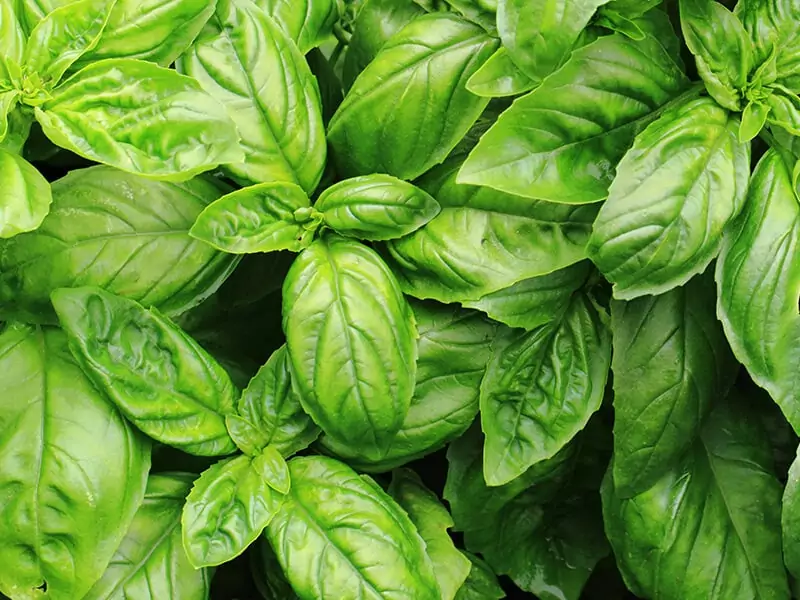
Sweet basil is, without a doubt, the most common variety of basil. This basil type is a must in pesto, salads, marinades, or many Italian recipes.
It’s also a great alternative for mint, although you can say that there are many undeniable differences between basil and mint. For instance, did you know that you can make a mojito with basil leaves instead of mint? I know; mind-blowing, right?
The applications of basil don’t just stop there. When you’re in a pinch and need something to replace coriander, you can rely on sweet basil to do the job. Most of the time, a 1:1 substitute ratio will work.
Additionally, this herb is excellent for warding off mosquitoes and makes a great addition to any garden. The ideal growing conditions of this basil are sunny and hot locations.
30. Thai Basil/ Siam Queen Basil
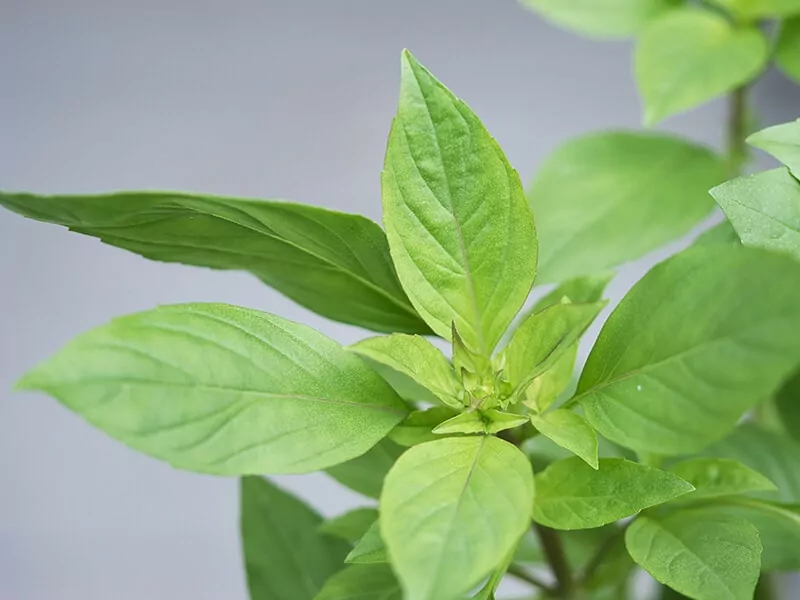
The defining characteristic of Siam Queen basil is its dark purple flowers that bloom near the end of its growing season. This herb is excellent for a garden because it grows in large groupings, providing a lush ornamental space.
Although it is not as sweet as other basil, it provides a pronounced licorice taste with a potent anise flavor.
Aside from the basil varieties mentioned above, there are also many several lesser known others. However, rest assured that I’ve covered the most popular ones that you’ll come across at least once in your life.
Beside basil leaves, you might also want to know that basil seeds are edible as well. Visually speaking, basil seeds look very similar to chia seeds, leading to many comparisons between basil seeds and chia seeds. Personally, I’d say that you should try out both of these seeds.
Admittedly, with just a quick glance, it might be hard to tell Thai basil apart from regular basil. However, with practice, you’ll be able to differentiate the two with relative ease. It’s also vital to be able to do so, as Thai basil have different culinary applications from regular ones.
For even more information about different types of basil, check this out!
Bonus Guide: 3 Foolproof Ways To Keep Basil Fresh
If you grow your own basil, you’ll probably end up with a ton of basil that will eventually go bad, leaving you wondering what to do with so much basil.
Well, if you can’t eat them all, it is high time you learned how to preserve them. Give this section a read, and you will find out the proper ways to store basil.
Of course, there are many other ways to store fresh basil, but I will only highlight the most common ones in this part.
1. Keeping Basil At Room Temperature
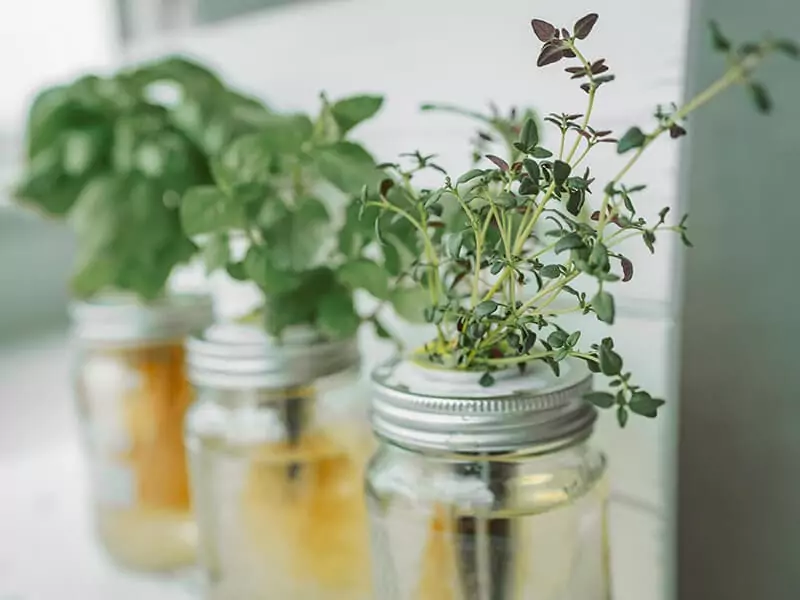
Basil can be kept at room temperature, but that doesn’t mean you should just leave them on your kitchen counter and walk away. You must put them in water to prevent them from wilting. Here’s how you can do it:
Step 1: Prepare The Jar
Grab a mason jar big enough for your basil and fill it with water. You only need to put a few inches of water in it since you don’t need to submerge them whole.
Step 2: Put The Basil In
Trim an inch of the stem before putting the basil in the jar, just like how you put flowers in a vase.
Step 3: Cover It
Take a thin plastic bag and loosely cover the basil leaves. And just like that, your basil can now last from 1-2 weeks. Remember to replace the water every 1-2 days. Do not put the jar in the fridge or freezer.
2. Keeping Basil In The Fridge
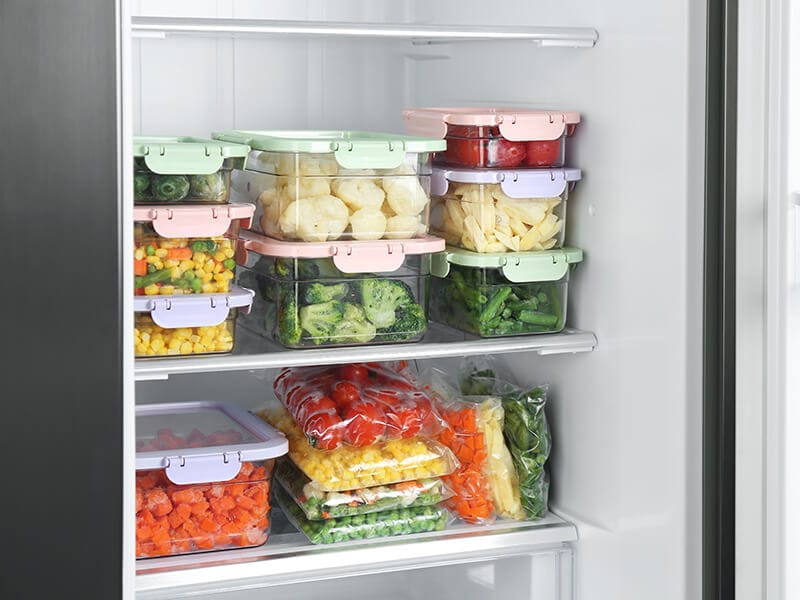
A refrigerator is an obvious option for storing salad greens like basil. Follow these steps below for the best results.
Step 1: Prepare The Leaves
Remove the leaves off the stems and wash them well. Then dry them using dry paper towels or a salad spinner.
Step 2: Wrap Them
Wrap the leaves in a damp paper towel before placing them in the fridge. Make sure that the towel is not too wet.
Step 3: Put Them In A Plastic Bag
Place the warped leaves in a plastic storage bag. Seal it tight and place it in your refrigerator. Your basil will also last 1-2 weeks if stored this way.
3. Keeping Basil In The Freezer
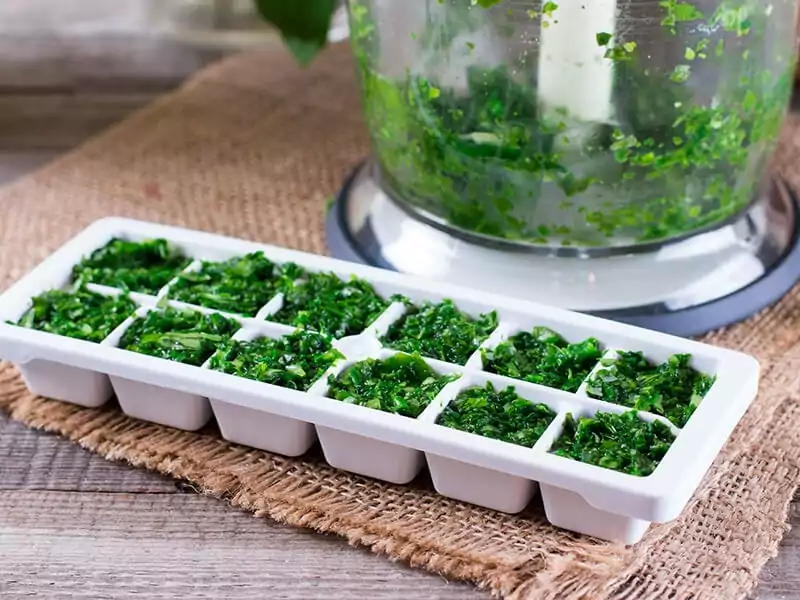
If you plan on keeping your basil for longer than 2 weeks, freezing will be a better way to preserve them.
Step 1: Blanch The Basil
Pour some water into a pot and bring it to a boil. Blanch your basil in it for about 10 seconds, then immediately drop them in cold water.
Step 2: Blend The Basil
Allow the basil to dry and remove the stems. Put it in a food processor with some olive oil and blend them to make a paste.
Step 3: Freeze!
Pour the mixture into an ice tray for easy access and place them in the freezer. And done, they still stay good for 3 months like this.
Note: If you want your basil to last even longer, you should learn how to dry basil using an oven. Dried basil can stay good for 1-3 years! However, note that dried basil have many differences from fresh ones, and it’s not always the case that they can be used interchangeably.
Let’s sum this section up with a lively demonstration about storing basil!
FAQs
Still have some concerns? Check out these frequently asked questions below for more information on different types of basil.
You’re Now A Certified Basil Pro!
And there you have it, 30 basil varieties! They may have different scents and tastes, but they are all delicious, healthy, and add excellent flavor to your home-cooked meals. So based on your preference, choose the ones you like most and incorporate them into your daily diet.
Do you find this article informative? Give me your thoughts in the comment section. Feel free to like and share this post with your friends if you enjoy it. Thank you for reading and take care!
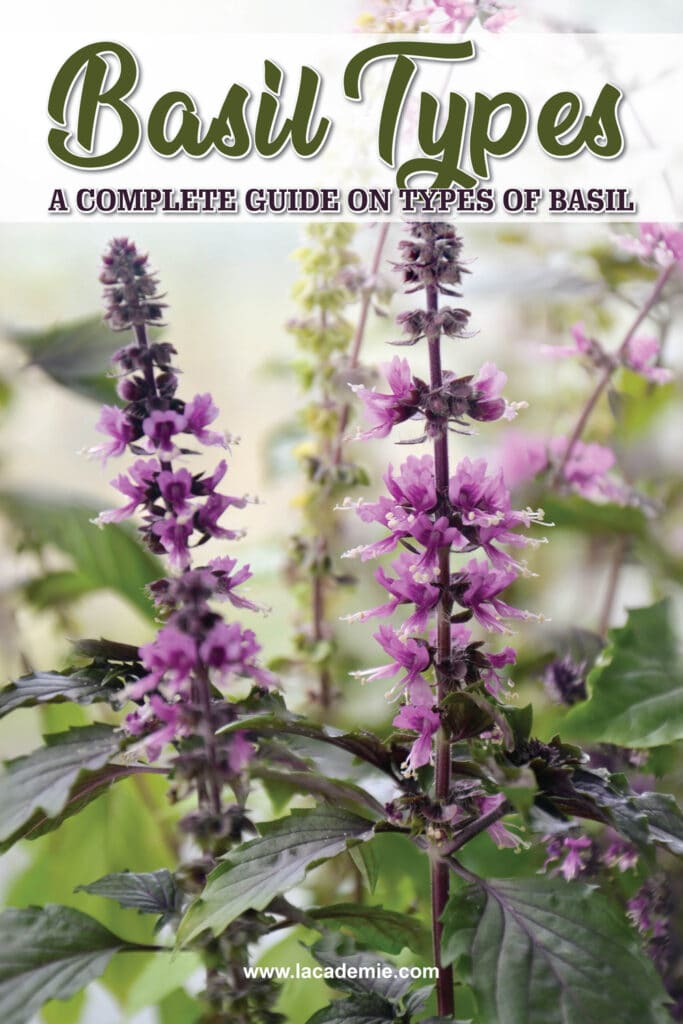
Reference
- Wikipedia, 2021. African blue basil.
- Healthline, 2020. The Health Benefits of Holy Basil.

